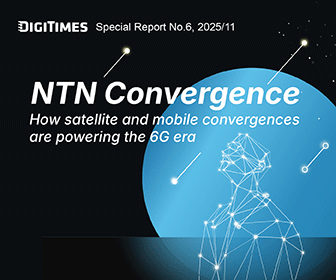Smart wearable products have gained significant traction in recent years, with major tech brands actively releasing new devices. Apple, Samsung Electronics, and Google have all launched smartwatches in 2024, focusing on functional improvements.
These companies are particularly emphasizing the business opportunities related to fitness and exercise. For instance, the Google Pixel Watch 3 not only supports heart rate monitoring and multimedia control during workouts but has also added planning and tutorial functions to its exercise features.
Garmin, a veteran in the smart wearable market with two decades of experience, asserts that the industry has entered a "Warring States Period," with intense competition among various players. However, Garmin maintains an advantage as a first-mover, leveraging its expertise in aviation GPS equipment.
In an interview following the 2024 Garmin Run in Taipei, Meng-Yuan Lin, Garmin's vice president of marketing and business for Asia, stated that the outlook for smart wearables in 2024 remains largely unchanged, with expectations of stronger performance in the second half of the year.
Lin revealed that consumer demand for all-in-one functionality in smartwatches is increasing. The latest fenix model, the fenix 8 released in late August, has seen robust sales. The fenix series has achieved record-breaking demand, with more new products slated for release in 2025 compared to 2024. Additionally, market conditions in the Southeast Asian (SEA) region continue to improve.
However, Lin noted that while overall sales of smart wearables have grown significantly, the average selling price (ASP) has generally declined, although overall market prices continue to rise. This trend reflects the maturing of the product category.
It's noteworthy that since establishing a factory in the Southern Taiwan Science Park in 2021 – its largest production site in Taiwan – Garmin has been planning further southward expansion, potentially to Thailand, Vietnam, or Malaysia. The company is developing long-term strategies spanning the next 10-20 years, with initial production lines primarily focused on automotive navigation OEM products.
Lin explained that Garmin's expansion strategy is market-driven. Regardless of location, logistical challenges involving personnel and components are always present. Factory areas are designed to be multipurpose rather than focusing on a single product line. Currently, Garmin operates 10 factory areas globally.
Industry insiders familiar with Garmin's global strategy indicate that the company's production expansion into Southeast Asia aims to provide proximity services to local automotive customer supply chains. Garmin plans to spend the next one to two years constructing the factory and recruiting talent, with operations expected to commence in 2026 at the earliest. Future expansion of the production site is possible to prepare for potential tariff barriers.
R&D personnel provide foundation for future growth
Taiwan accounts for 90% of Garmin's production capacity, with its Taiwan-based factories operating at near-full capacity. The Tainan factory, added in 2021, is entering its third phase of expansion.
The overall factory plan incorporates automation applications for front-end processes, including warehouse management systems, AI production planning, and smart material requirements planning. Lin emphasized that Taiwan's R&D talent is crucial for each front-end process manufacturer.
Using watches as an example, Lin explained that they need to be drop-resistant, water-resistant, multi-functional, have integrated software and hardware, and high durability. R&D personnel specializing in each aspect of the manufacturing process are vital. As Garmin looks to expand its product lines in the future, this talent pool will provide a solid foundation for growth.




